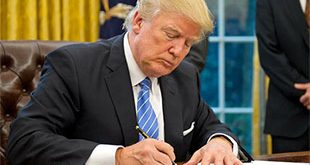
Kampala, Uganda | WENDY WHITMAN COBB | China became the third country to land a probe on the Moon on Jan. 2. But, more importantly, it became the first to do so on the far side of the moon, often called the dark side. The ability to land on the far side of the moon is a technical achievement in its own right, one that neither Russia nor the United States has pursued.
The probe, Chang’e 4, is symbolic of the growth of the Chinese space program and the capabilities it has amassed, significant for China and for relations among the great power across the world. The consequences extend to the United States as the Trump administration considers global competition in space as well as the future of space exploration.
One of the major drivers of U.S. space policy historically has been competition with Russia particularly in the context of the Cold War. If China’s successes continue to accumulate, could the United States find itself engaged in a new space race?
China’s achievements in space
Like the U.S. and Russia, the People’s Republic of China first engaged in space activities during the development of ballistic missiles in the 1950s. While they did benefit from some assistance from the Soviet Union, China developed its space program largely on its own. Far from smooth sailing, Mao Zedong’s Great Leap Forward and the Cultural Revolution disrupted this early programs.
The Chinese launched their first satellite in 1970. Following this, an early human spaceflight program was put on hold to focus on commercial satellite applications. In 1978, Deng Xiaoping articulated China’s space policy noting that, as a developing country, China would not take part in a space race. Instead, China’s space efforts have focused on both launch vehicles and satellites – including communications, remote sensing and meteorology.
This does not mean the Chinese were not concerned about the global power space efforts can generate. In 1992, they concluded that having a space station would be a major sign and source of prestige in the 21st century. As such, a human spaceflight program was re-established leading to the development of the Shenzhou spacecraft. The first Chinese astronaut, or taikonaut, Yang Liwei, was launched in 2003. In total, six Shenzhou missions have carried 12 taikonauts into low earth orbit, including two to China’s first space station, Tiangong-1.
In addition to human spaceflight, the Chinese have also undertaken scientific missions like Chang’e 4. Its first lunar mission, Chang’e 1, orbited the moon in October 2007 and a rover landed on the moon in 2013. China’s future plans include a new space station, a lunar base and possible sample return missions from Mars.
The most notable feature of the Chinese space program, especially compared to the early American and Russian programs, is its slow and steady pace. Because of the secrecy that surrounds many aspects of the Chinese space program, its exact capabilities are unknown. However, the program is likely on par with its counterparts.
 The Independent Uganda: You get the Truth we Pay the Price
The Independent Uganda: You get the Truth we Pay the Price



